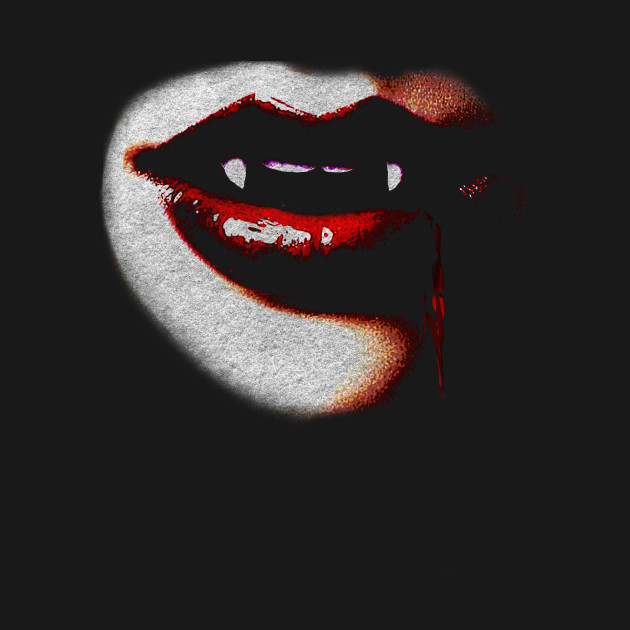There's More to that Mouth
By Isabella Hess

Bram Stoker’s Dracula features different portrayals of men and woman from the
idea of the new woman that can be seen in Lucy’s sexual awakening, to a more
traditional idea of masculinity with the group of men constantly feeling the
need to protect the women around them and shelter them from the dangers of the
world. Like Lucy, the three female
vampires that live within the walls of Dracula’s castle also represent an
expression of sexuality in women, but because they are vampires they are seen as
evil temptresses, luring Johnathan in. He describes his feelings as “uneasy,
some longing and at the same time some deadly fear” (42). I think the fear he has
is due to their sexual advancement of him, when normally the man should be the
one making the move and women should be the one in waiting. Another importance
given to these women has to do with their teeth and their mouths. Stoker places
a fixation on the physical appearance of the vampires “voluptuous lips” and
their teeth that “shone like pearls” as well as other aspects of their body
because women’s bodies are more important than any substance they have at this
point (42). When I first read this chapter, I didn’t think about the importance
of the mouths of these vampires and how it could be read to mean something
different, but the more we’ve talked about it the more I see it’s sexual
implications. Stoker uses “scarlet”, “ruby”, “softness, as well as many others
to describe the lips of these women, but if you read into it, lips could also be
read as if he was talking about a vagina. In contrast, words like “hard” and “sharp”
are used to describe the teeth of the women which are used to penetrate the
skin of individuals, this similarly could be read as phallic and the teeth
being representative of a penis (42-43). Being opened to this
different interpretation, I remembered our talk about Oscar Wilde and how he
was put on trial for being gay and in engaging in romantic and sexual relationships
with men. This made me wonder about how the portrayal of the female vampire’s
penetrative teeth played into that and if maybe they were desired and feared
because they represented, at least with Johnathan, this homosexual attraction,
but also this knowledge that it could lead to problems because it wasn’t behavior
that was praised within the society. Dracula’s vampire brides can be categorized
as new women able to express their sexuality, but I argue that they can also
represent the fear that surrounded the idea of homosexuality around that time. Dracula
has a particular interest in the different ways the women expressing their
sexuality are seen, especially when looking at how human women are looked at
and how vampire women are seen. The vampire brides are alluring, but feared,
and the human females are sick and in need of change. A major difference that
can be seen between the two portrayals of the women in the novel ultimately
comes down to their mouths, and the representations that go with them.
Reference
Stoker, B. (2012). Dracula. New York, NY: Sterling Publishing Co., Inc
The way that Bram Stocker portrays the women in the novel is indeed risqué. I totally agree that he made them out to be flirty and lacking a moral compass, as you have described above in regards to the New Woman. However, as much as we’d like to think this is something of the past, our current class novel, Dead Until Dark, reminds us that slut-shaming is still in full-force. Charlaine Harris, much like Bram Stoker, has a mission to make women look filthy in terms of morals, usually forgetting about their male counterparts. While Stocker describes their lips, Charlaine Harris describes what they wear. We find vivid descriptions of Sookie’s outfit, complete with a low neckline and “screw-me shoes” (105). Harris seems just as determined as Stoker to shame women for being anything other than a nun. Apparently, you must show no skin, speak no opinions, and have no romantic initiative to be considered morally sound in the opinions of the two authors in question. This reminds me of a famous poem, “You Foolish Men” by Sor Juana Inez de la Cruz. She saw this double standard and took a stand against the hypocrisy. A line that really speaks to this discussion is the following; “Por qué queries que obren bien si las incitáis al mal?” The translation does NOT do it justice! Sor Juana calls all men to the carpet- she claims that the men are tempting the women into sex before marriage, and then getting angry when the women are no longer virgins. This poem brings another dynamic into the complex discussion of women and sexuality, which we have discussed thoroughly in class.
ReplyDelete